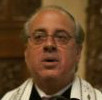Passover’s symbols celebrate Jewish strength
Passover provides each of us, through the Passover symbols of the Seder, the means to strengthen world Jewry, increase our security and enrich our own lives.
The Afikoman, which is the broken half of the matzo, reminds us of our need to work for Jewish unity; we should not be a people broken or divided against itself. It is for this reason that the Chief Rabbi of Rome, Dr. Riccardo DiSegni, invited Five Towns high school student to Rome in February for the eighth annual American-Jewish/Italian-Jewish High School Youth Exchange Program. Our community will host the Jewish youngsters from Rome in May.
Our students were shocked to hear from their Roman partners of their fears of displaying signs of their Jewish identity from wearing a Jewish star to yarmulkes or shirts and bags that contained Hebrew writing or spoke of Israel, when they ventured outside of the Jewish ghetto. In addition, our students were directed not to tell anyone they met outside of the ghetto that they were Jewish.
The Rome students recounted their families experiences with the fascists and Nazis during the Mussolini era and the persecutions that they endured in Libya under Moammar Gadhafi. Half the Jewish community of Rome fled Libya.
One young lady, after proudly stating that her ancestors came to Rome with Titus more than 2,000 years ago, told the students how fortunate they were to be able to live openly as Jews without fear and that their friendship and support and that of the American-Jewish community gave her and the Jews of Rome a greater sense of security. We are, indeed, one people of one faith and one fate, responsible for each other.
The sweet charoset and bitter Maror, reminds us that we have the strength to overcome the bitter and difficult times in our world and in our lives and that we should enjoy the sweet moments in life while we have them.
The shank bone symbolizes the Holocaust, for what else can a piece of burnt flesh be? As we remember the Shoah, let us take its central lesson to heart: “That no one will save the Jews, save the Jews themselves.” With this in mind, we must strengthen our commitment to the state of Israel
Finally, the egg is at the very heart of the Seder for it represents our children. We are all familiar with the expression, “It’s all about me.” This approach to life is as unwholesome as it is un-Jewish. However, the Seder is all about our children. It is their need to learn, to understand, to remember, and to celebrate that we focus on at the Seder.
Our children and grandchildren are the future of the Jewish people, the future of the world, our immortality, our sacred trust. We enrich their lives and help them on the way to secure and happy futures when we show them and teach them about the glory, beauty, and joy one can find as a Jew who is involved with his people, temple and community.
From my family to yours, our heartfelt wishes for a happy, healthy and sweet Passover.

 39.0°,
Fair
39.0°,
Fair 




